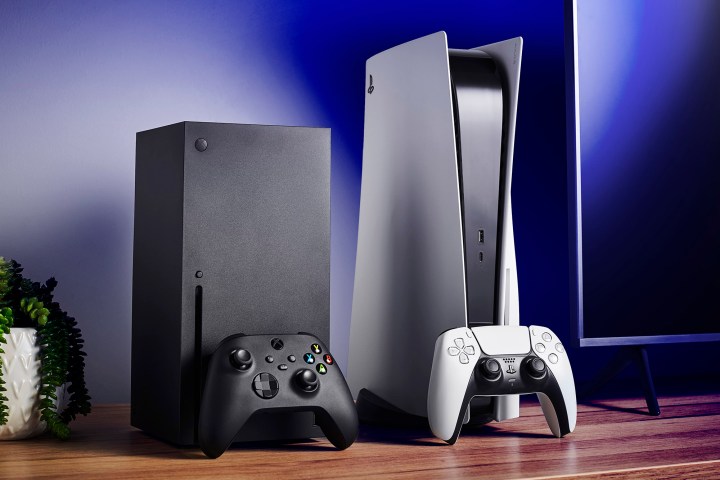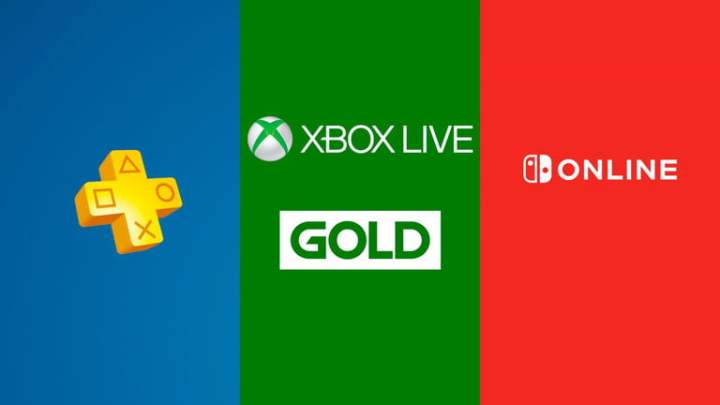It’s been over two years since the start of the current console generation, which launched with a rocky start at the end of 2020. You’d think it’s been more than long enough to understand what it’s all about, but for many, there’s still confusion. That might be changing this year. As Tomas Franzese wrote earlier this month, 2023 could be the year where we finally see what games define this generation’s consoles, at least in terms of exclusives. He also noted that games could stop being cross-platform, launching on just current-gen consoles instead of simultaneously on last-gen ones.
While that’ll finally give us some memorable games, it doesn’t bring us closer to defining the hardware itself. Besides a few extra teraflops and new ultra-fast SSDs, there isn’t much that helps the
That doesn’t mean this generation is aimless, though; it’s just not one that hinges on hardware and software, like previous consoles. Instead, this generation of consoles will live and die on their services, from Game Pass to cloud streaming options.
What’s the deal with consoles?
Moore’s Law indicates that the number of transistors in a microchip will double every two years, and for a long time, the industry kept up with that trend. However, over the past few years, technology gains have been plateauing, and video game consoles are no different. The

While the
“We’re just not going to see the revolutionary leaps in technology and content that we’d seen in the 90s and 2000s when a new console generation meant a completely new content slate and technical capabilities that hadn’t been seen before,” analyst Mat Piscatella of the NPD Group tells Digital Trends via email.
The newest consoles are just becoming less important as a way to play the most popular games. For the first couple of years, both Xbox and PlayStation have released new games like Horizon Forbidden West on last-generation machines, even if the older hardware struggles with the most intense titles. Sony has also been successfully experimenting with releasing its first-party titles on PC months or years after their initial launch and says it’ll continue to do so. Meanwhile, Xbox has been putting its attention on Xbox Game Pass and Xbox Cloud Streaming, which allows users to play games on their consoles, PCs, or mobile devices. And thanks to cloud saves, they can play on one machine and pick the game up on another. Nintendo will continue to be a closed ecosystem on its own plane of existence, but even it can’t deny that the Switch needs games outside of itself and has been supporting more ports, both locally and through the cloud.
They’ll continue to sell, but as video game companies try to figure out the best way to recoup costs as games become more expensive to make and therefore become more expensive to purchase, they’ll look towards other emerging technologies. That’s where services like Xbox Game Pass come in.
The rise of services
At this point, there is little difference between Xbox and PlayStation regarding the consoles themselves, and until we start to see more exclusives in 2023, there’s little reason to purchase a
All the major console manufacturers, including Nintendo, are putting more of their bets onto services, whether that’s cloud gaming or game catalog subscriptions. The big name in this space right now is Xbox Game Pass, which gives players access to a huge catalog of games, including first-party releases, and its cloud streaming for $15 per month. Last year, Sony reinvented PlayStation Plus, which doesn’t go as far as Xbox Game Pass, but still offers a back catalog of older games if you subscribe to higher tiers, along with a rotating list of free games and features like cloud saves. Nintendo has Switch Online, which allows people to play games online and offers access to a growing catalog of retro titles. You get the picture.

Consoles have had services for years. Think of Xbox Live Gold, which was introduced on the Xbox 360. For a fee, users could opt into online multiplayer and free games per month. These companies have thought about ways to get more money from their customers beyond just selling games and hardware, but this generation, it’s about getting money from players in other ways. As long as customers are buying into their ecosystems and purchasing their products, they win.
When Microsoft purchased ZeniMax Media in 2021, it got access to Bethesda’s huge library of games, including Elder Scrolls, Fallout, the upcoming exclusive Starfield, and so many others. However, it wasn’t just that Xbox would have more exclusives — although that’s certainly a part of it. What people focused on was their addition to Xbox Game Pass. You could play future Bethesda games day-one, but you could play them essentially for free with a subscription.
Microsoft is all-in on Xbox Game Pass. You can see this with the release of the Xbox Series S, which is almost identical to an
And it’s working. In early 2022, the company said Xbox Game Pass had around 25 million subscribers. It’s a great deal too. For $15 per month, you can try out games you wouldn’t have otherwise, and you can move them from your TV to your PC or even your phone. This is how I played Pentiment while also using my subscription to jump to some older titles, like Halo: Master Chief Collection, without worrying about my budget.

PlayStation is trying something similar with PlayStation Plus, but also in expanding outside of first-party games. It plans to launch 10 live service games over the next four years thanks to its acquisition of Destiny 2 developer Bungie, and it’ll continue to dabble in movies and TV, mobile gaming, PC gaming, and more.
Granted it’s not all services, but what the big console makers are showing is that the hardware itself, while still important, isn’t at the top of the list anymore. The needs of players are expanding, and so must how we play games.
“Back in the PS2 era someone bought a box, connected it to a TV, and had to buy games on a disc. The ways in which people engage with these boxes have just expanded in so many ways. It’s all about playing what you want, when you want, where you want, and with whom you want. Back in the day it was play what you got where you are and that was it,” Piscatella says.
What will the future hold?
We’ll continue to see major console releases. There’s no way these companies will throw away the hype cycle surrounding a new hardware release and the competition that can drive sales. Plus, they’re still selling very well. As stock becomes more stable (at least compared to what it was immediately post-launch), manufacturers report stronger sales. Sony just announced at CES 2023 that the PS5 is a third of the way to meeting its lifetime sales target, with around 30 million units sold globally, and, according to VGChartz, there isn’t a huge disparity between it and Xbox. On the other end of the industry, the Nintendo Switch continues to dominate nearly six years after its introduction.
This isn’t just in the U.S., where console sales tend to be strongest. Manufacturers are investing more in Asia and players are responding. According to Darang Candra, analyst at Niko Partners, this is the case even in Asian markets where PC and mobile reign supreme.
“The current console generation has been plagued by hardware shortages, game delays, and a lack of next-generation-only games. Yet, we have continued to see strong demand as consoles remain a key access point for the latest HD AAA games,” he tells me via email.
However, games and consoles are getting more expensive. Sony just announced it’ll raise the price of the PS5 by around $50 in major markets, and many major games now retail for $70. Being into video games is an expensive hobby, so of course, players will be looking for cheaper alternatives, like subscription services or cloud gaming that doesn’t require a pricey console. Or, as Candra says, targeting platforms players already own, like phones, tablets, and PCs.
When people complain about how this generation of consoles hasn’t come into its own yet, it feels like they’ve yet to see the full picture. This is a generation of services, of subscriptions, and technology that aren’t tied to hardware, and we should be watching to see where it goes.
Editors' Recommendations
- Every rumored video game console: Nintendo Switch 2, PS5 Pro and more
- Fallout 4 is finally getting free Xbox Series X and PS5 upgrades
- Mecha Break’s robot customization shakes up the battle royale formula
- You need to check out this killer action game on PS Plus this month
- Every rumored Xbox exclusive coming to PS5 and Switch




